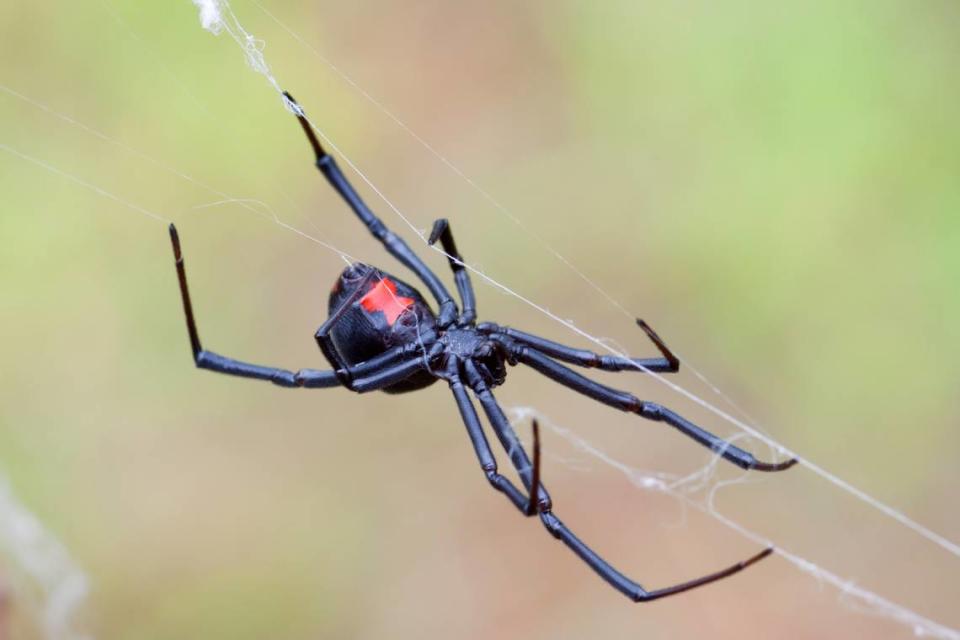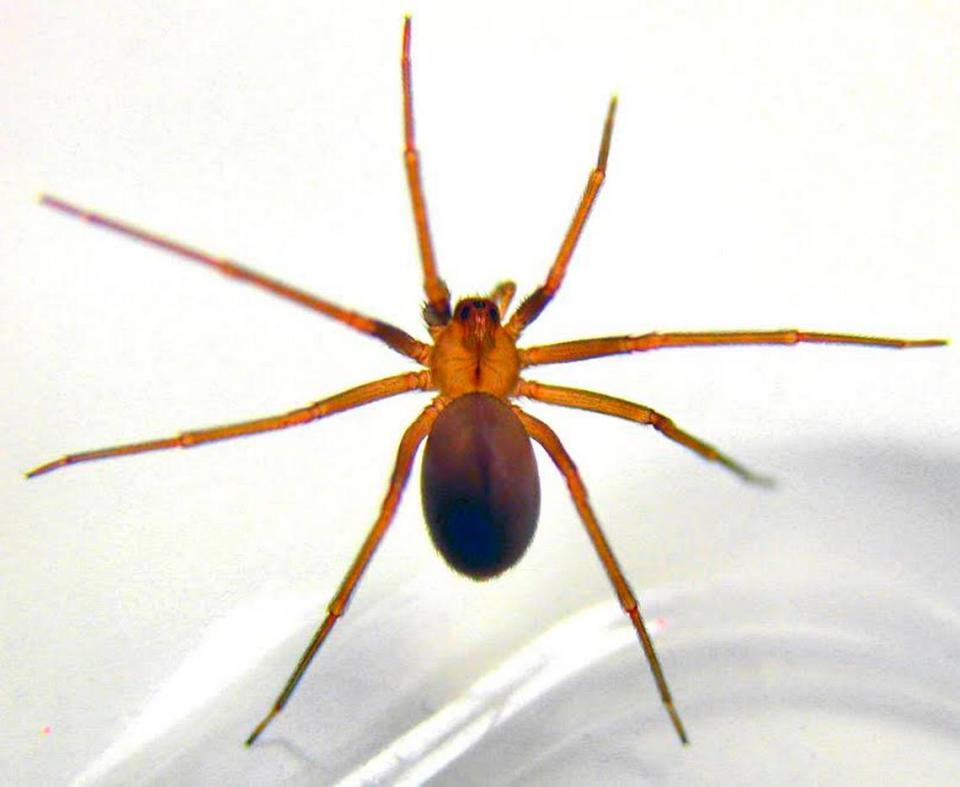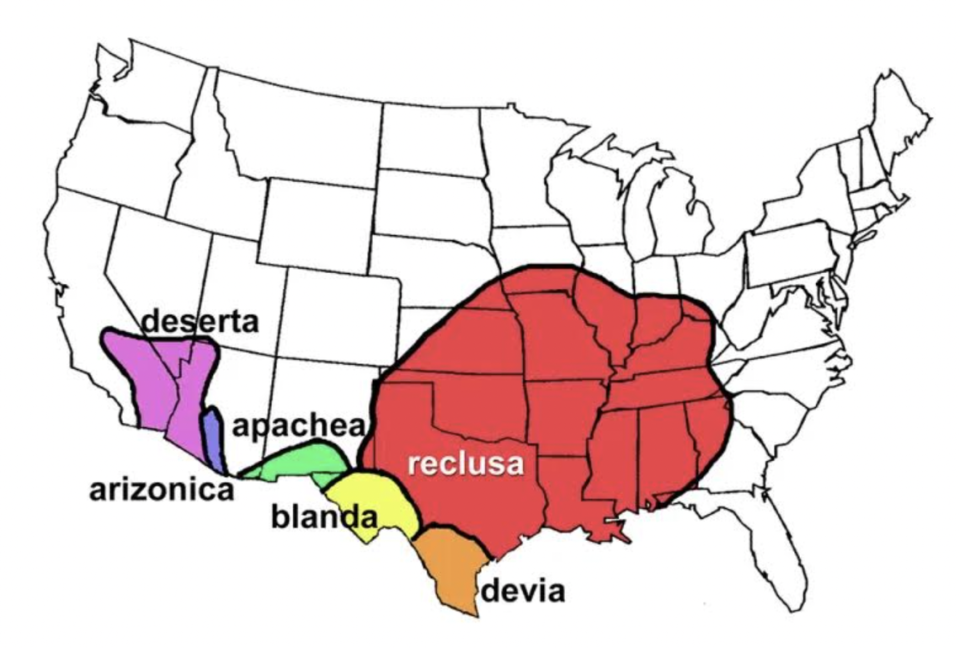Which Pennsylvania spiders are dangerous to humans? How to identify and avoid them
While roughly 3,000 species of spiders are found throughout the U.S., very few pose a direct threat to humans. Spider bites are rare, and medically significant incidents are even less common, according to Penn State Extension, the university’s science-based information agency.
Primarily, arachnid-fearing Pennsylvanians need to worry about only one spider species in the rare event of a bite: the black widow. Brown recluse spiders, which also offer a medically significant bite to humans, are not native to Pennsylvania but can be found in a wide range of the U.S., primarily in southern and Midwestern states.
You might be a bit more likely to encounter spiders in your home in the coming months as some head indoors for the fall and winter seasons. Here’s what you should know about Pennsylvania’s few medically significant spiders, including tips for managing their populations and treating unlikely bites.
Southern black widow (Latrodectus mactans)

While many black widow species are recognized throughout the U.S. and the world at large, the southern black widow is primarily found in Pennsylvania. Its relative, the northern black widow, can also be found in the Keystone State, Penn State Extension writes, though neither species is particularly common.
“Black widows are the most dangerous spider in our area, but the risk is overblown in the public imagination and bites are rarely life-threatening,” Penn State assistant research professor of arthropod identification Dr. Michael Skvarla wrote in an email to the Centre Daily Times. “In fact, there has not been a death in the US from a black widow bite in more than 50 years (and reports older than that are often dubious at best).”
Female southern black widows are jet black-colored with a shiny finish, distinctly known for their well-recognized orange or red hourglass marking on their abdomens. Males, meanwhile, are much smaller than females with white underbody markings and red spots.
Black widow spiders are usually found in dark and undisturbed places, including under stones, in stumps or woodpiles, in dark corners of barns and garages and other undisturbed cavities, such as vacant animal burrows. They typically make their webs outdoors in undisturbed areas or indoor non-living spaces such as garages, Skvarla says. Unlike some other species, their webs are often skimpy and unorganized.
The black widow gets its name from a particularly gnarly behavior: Males are often killed and eaten by females shortly after mating. A female can live up to a year or more and produce several egg sacs containing up to 800 eggs, which hatch in about a week. Females usually stand guard over their eggs and may defensively attack those who threaten the offspring.
Black widow bites come primarily from adult female spiders, and especially those protecting an egg sac, Penn State Extension notes. At first, bites appear painless before symptoms arrive an hour or two later, usually including any of the following: nausea, chills, slight fever, raised blood pressure, retention of urine, burning sensation of the skin, fatigue, motor disturbances, breathing difficulty, constipation and muscle aches, particularly in the abdomen.
“Small children and the elderly are more susceptible to the venom due to their smaller body mass or generally frailer condition, so are more likely to have adverse or severe effects,” Skvarla wrote. “So, a bite is certainly not a pleasant experience, but it’s usually not as bad or threatening as most people perceive them to be.”
Though a rare black widow bite is frightening, it is unlikely to turn fatal, researchers say. The 2021 National Poison Data System report from America’s Poison Centers reported zero fatalities following 1,004 black widow bites. Some people may wind up facing more complications from an allergic reaction to antivenin — a treatment for black widow bites developed from horse serum — than a bite on its own, Skvarla wrote.
Recluse spiders (Loxosceles species)

Perhaps the most notorious recluse spider is the brown recluse, which is not native to Pennsylvania but can rarely be found in an individual home or building, Skvarla writes. He says most sightings are linked to people who moved or traveled from areas where brown recluse spiders are native, such as the Midwest and South.
“Brown recluse [spiders] cannot survive winter in Pennsylvania and do not move far, so they are usually confined to the single building they are infesting and do not move to other buildings, even in urban/suburban areas where buildings are close together,” Skvarla wrote.

These spiders are brown in color with long legs attached to a body of roughly 9 millimeters in length, Penn State Extension writes. Brown recluse spiders sport three pairs of eyes arranged in a triad and are known for their violin-shaped marking on their backs, with the body of the “violin” near the eyes and the neck of the “violin” extending backward.
Brown recluse spiders are not aggressive and bite rarely, Skvarla says. When bites do occur, they rarely result in more notable symptoms than a small red mark and localized pain similar to other spider bites.
Among bites, “10% result in some kind of localized necroses, of which 2/3 heal on their own without scarring or other tissues, and less than 1% cause systemic issues that require hospitalization and may be fatal if left untreated,” Skvarla said. “Considering this, the risk of brown recluse bites in Pennsylvania is basically non-existent, with the risk of a serious bite negligible. You’d probably have better luck winning the Powerball.”
Mediterranean recluse spiders (Loxosceles rufescens) typically inhabit steam pipe tunnels and building basements throughout the Northeast, Skvarla says. They can even be found in the steam tunnels running beneath Penn State’s University Park campus.
This spider rarely leaves the tunnels it infests, Skvarla says. The only true risk they pose applies to workers who might enter their space.
“Because of this, there are no known bites from Mediterranean recluses in the U.S. The few bite reports we have from Europe indicate that bites are mild and do not cause more serious reactions like those reported for brown recluse [spiders],” Skvarla wrote.
Other notable spiders in Pennsylvania
Of course, you might encounter many more spiders in Pennsylvania than just black widows and brown recluses. Luckily, few found in and around your home offer medically significant bites.
Here’s what you should know about a few of these spiders, according to Skvarla:
False black widows (Steatoda species) may look like their dangerous doppelgangers, but they lack the red hourglass-like markings found on black widow abdomens. These spiders offer bites that can cause moderate to severe pain and occasional nausea, headache or lethargy, but symptoms should resolve on their own within a day or two.
Broad-faced sac spiders (Trachelas tranquillus) are often found indoors, especially in the fall, Skvarla says. Their bites are reported to be more painful than bee stings, though bites should present little threat to humans unless an infection develops. These spiders are generally reluctant to bite unless they feel threatened, such as being trapped between clothing and skin or picked up on purpose.
Wolf spiders (Lycosidae species) and grass spiders (Agelenidae species) are often found outdoors and potentially near homes. Wolf spiders may bite defensively, but their bites are not medically significant. These spiders offer excellent pest control services by feeding on bugs and pests, but you may choose to remove them from your home by eliminating entry points and keeping your lawn and nearby bushes and flower beds cut short.
It’s important to remember that all spiders can deliver venom, but most bites have little or no effect on humans, Penn State Extension writes. People with compromised immune systems or certain medical conditions might be more vulnerable to some venom.
“Most spiders are too small to be of concern to humans,” wrote Steve Jacobs, a former Penn State Extension senior associate. “The fangs of these tiny creatures cannot penetrate the human epidermis unless the spider is held in place and allowed to bite the very thick skin between the fingers or toes... Venoms from any spider are poisonous and/or toxic to their prey, but most are not poisonous or toxic to humans.”
Visit extension.psu.edu/commonly-encountered-pennsylvania-spiders to learn more about spiders you might encounter in Pennsylvania. The extension’s resources include fact sheets for dozens of spider species, photos to aid identification, pest control tips and glossaries for breaking down scientific jargon.

